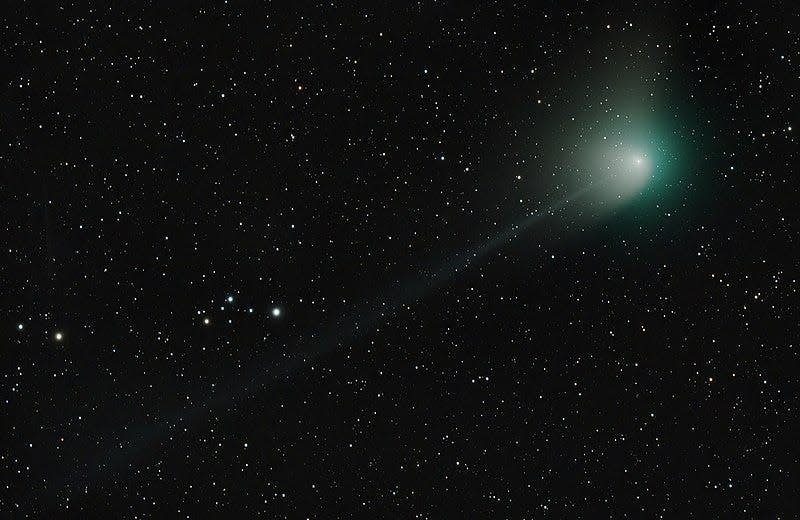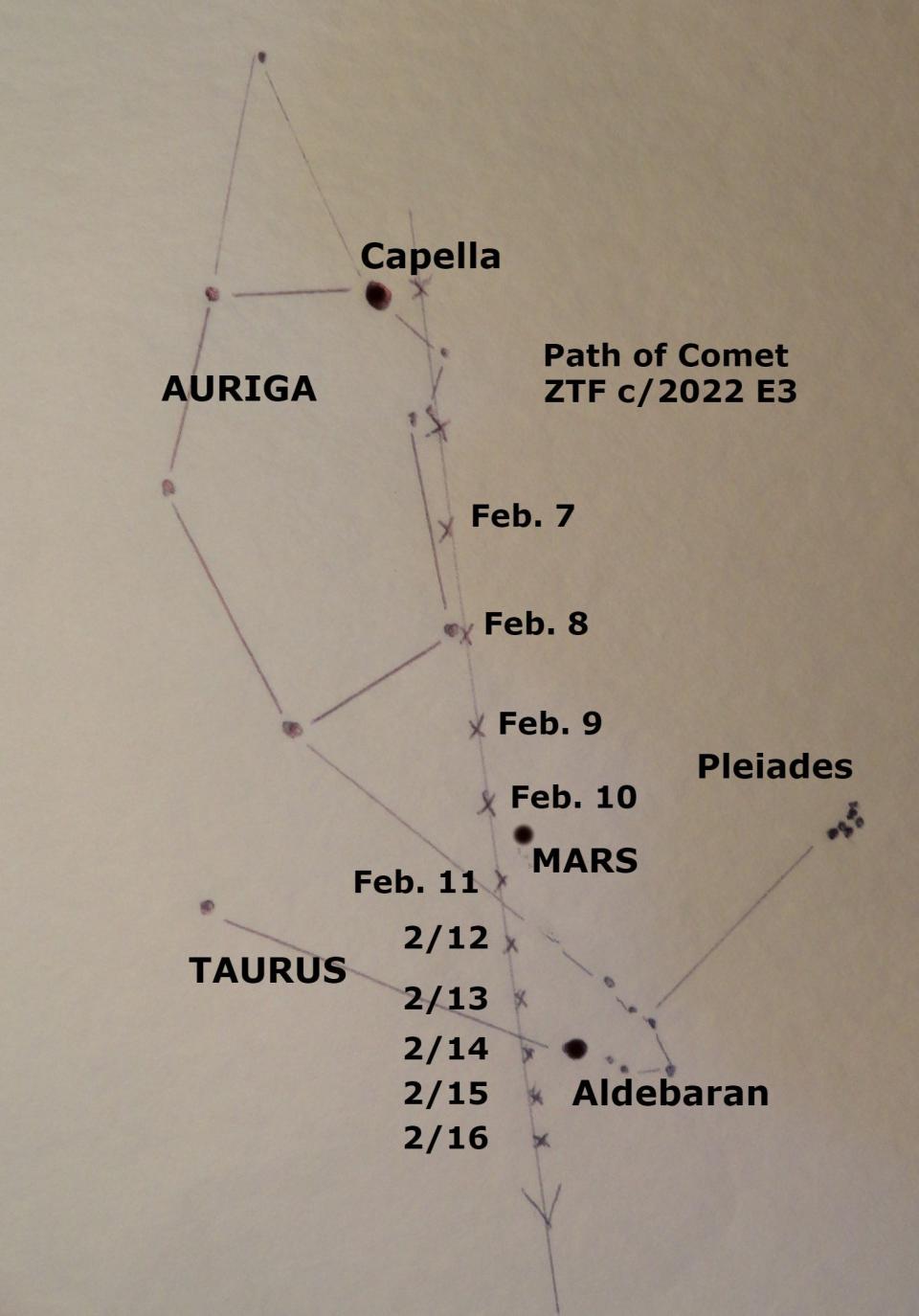How to spot Comet ZTF next clear night in the Poconos
You can see the “green comet" in the evening sky this week, although binoculars will make it much easier and it doesn’t look green except in a large-enough telescope or photographs.
It’s called Comet ZTF (C/2022 E3) and this is your chance to see this never-before-seen cosmic visitor before it fades away. You might catch it with eyes alone, in a dark sky!
I caught it in binoculars on February 1 although the Moon was still bright. Since February 7, however, moonless skies have returned in evening hours, allowing a much better view. This great ball of vaporizing ice and dust, in its rounding of the Sun, is conveniently placed high up in early-mid evening.

This isn't one of those rare, grand comets that pass close enough to make it bright and obvious, with a long tail that the practically anyone happening to look up couldn't fail to miss. When I saw it, the comet was high above the North Star, appearing as a white, fuzzy, round spot, brighter in the center.
This is the head of the comet, known as the coma. This consists of waves of dust and gas come off the melting nucleus unseen but embedded in its core. I only suspected a hint of the beginning of a dim tail.
I am looking forward to a much better view with the brilliant moonlight out of the way, if clouds cooperate. This time I aim to have my telescope out and ready to see what it will show.

It is quickly moving night to night due south, as it recedes back to deep space, slowly dimming. On Saturday February 10 and Sunday February 11, the comet will be less than two degrees away from the bright orange-red planet Mars, making it easy to spot. Two degrees is roughly the span of two fingers held tightly together with your hand extended straight at the sky. This is a great chance for photographers.
At 8 p.m. as seen from the Poconos, the bright yellow star Capella will be nearly overhead, and Mars about 20 degrees below it (about the span of your thumb and index finger extended out).
The comet is expected to be about 6th magnitude, detectable to unaided eyes if the sky is very dark. The Moon rises about 10:30 p.m. EST.
On Valentine Day, February 14th it will be passing closely left (east) of the bright red-orange star Aldebaran. From February 19 it will be passing right (west) of the constellation Orion.
The Moon rises about roughly 50 minutes later each night, giving us a widening window of darker evening skies. Last quarter Moon is on February 13, rising around 12:45 a.m. EST.
Keep looking up at the sky!
This article originally appeared on Tri-County Independent: Here's how you can spot the 'green comet' in the Poconos night sky

